QuestionHello! My son has a featherfin catfish (approx. 5 inches long) that isn't eating and is acting lethargic and hanging out at the intake of the filter (26 gal. tank). His skin looks weird...like grayish, but doesn't look like ick. His skin today is also peeling...do they do some kind of moulting thing? Petsmart tested the water this morning and said it was fine. She told me to add some salt and stress coat and do a water change..which I have done. Should I also get some sort of antibiotic or ? He's a great fish and we don't want to lose him! The tank has an aerator strip in the bottom back...there are just four tiny baby cichlids in with him and they all get along. Is there a reason I should move him into his old 10 gallon tank just to recuperate or ? He was moved into the new tank about two weeks ago, and it was allowed to circulate (with bacteria added) for a couple of days before we moved him in. The cichlids were introduced a few days later. The PH is 7.8 (which I understand these fish like) and the temperature is 75 degrees. Thank you so much!
Cheri
AnswerHi Cheri,
I too, have a featherfin catfish - they are great fish, indeed. I had one in a 29 gallon tank for a couple of years and luckily upgraded him to a 55 gallon tank. I really believe these fish need at least 36" of floor space, though 48" is better. If you notice how they like to roam the tank at lights out, you'll see they need a lot of space for their clumsy adventures! Also, they produce a lot of waste, being big deep bodied fish who are mostly carnivorous...so the extra volume helps with waste dilution, as well.
It's possible that the cichlids are picking on your catfish when you are not around (even baby cichlids can be very aggressive, especially African cichlids, if that's what you mean) but much more likely is that you accidentally introduced the catfish to an uncycled tank. Let me explain.
Bottled bacteria is not full proof by any means, and a lot of the products such as Stress Zyme and Cycle...most experts agree, they are bunk. (Unless the 'expert' you're talking to happens to be working at a chain pet store, where they are instructed to push these products heavily!)
Tetra SafeStart is the best non-refrigerated product I know of, and I have at least some faith in it. But for it to work, an ammonia source needs to be added right away - the most convenient is a pinch of flake, but you can also use a piece of cocktail shrimp. It looks like you didn't add any ammonia source...strike one.
Strike two...cycling takes quite a while, certainly longer than a couple days! Fishless cycling takes a minimum of two weeks with brand new everything. If you are pulling the filter media off of another tank, then it can take considerably less, but there's still the rule about adding an ammonia source for it to be effective. Also, you need to wait at least a few days for it to work...not two days, but more like 4 to 7, depending on the size of the tank.
Lastly (and this is very important because it's something you still have control of, whereas the other stuff is in the past) you need to get your OWN test kit, please look into this right away. A strip test kit will do, a liquid test kit is more accurate. Really, the choice is yours.
Having your own test kit will show you exactly what is going on. When cycling, at first, all levels are perfect. Then, as ammonia is introduced (via decomposing food, flake or otherwise) then you get an ammonia spike. Then ammonia and nitrites. Finally, nitrites with a trace of nitrates. Then finally, only nitrates...bingo. That is when a tank is truly cycled.
It is extremely likely that you put your catfish into an uncycled tank, even though you meant not to. The steps you took were thoughtful, but just not enough to do much. The readings of "fine" from your pet store person and their suggestion to add salt, tells me that they probably didn't give you much (if any) advice on fishless cycling, and any advice they did give you is suspicious. The very best (and most expensive) additives, such as refrigerated products like Dr. Tim's One and Only, require that you add fish immediately...in lieu of fish, some ammonia source. You keep dosing the product and doing water changes as needed.
Hopefully since you are past the period of cycling for a normal tank, ammonia and nitrites should be 0 ppm, but it's likely that nitrate is high. This is normal when a tank is "coming off" of cycling. Do water changes to dilute the nitrate, at least 25% to start with.
A couple of days later, I would do another 25% water change. Then another in three days or so. This alone should make your catfish feel better, but if he still doesn't look right, you will need to medicate him.
Salt helps some fish, but most catfish don't like salt. (Plenty of other fish, like plecos, snails, and most tetras, don't either.) In fact, the salt will just make him slough off more slime coat...the greyish stuff you're seeing. It's probably not skin, but NO fish (no fish at all, except for aquatic frogs) molt, and don't let anyone tell you otherwise!
You can try Melafix if you'd like, but this is a hit or miss gamble. It works sometimes, not always, and certainly does not work better than lots of new, clean water.
If you do need to medicate because the catfish continues to look bad, I would suggest Maracyn as a medication. A 20", 10 gallon tank is woefully small to treat a 5" fish, I wouldn't. Instead use a large Rubbermaid bin or some other vessel that will hold more water and provide more room. Square shaped bins can use hang on back filters...all you need is something to move the water around, a powerhead or even a bubble wand or airstone wall will work.
Maracyn treats many things, so is handy to have on hand. API Fungus Cure treats only fungus, so could also work. When a fish starts losing its slime coat it is in danger of getting fungus, but if you can reverse the sloughing usually he will heal on his own. Using something like Stress Coat would be helpful in the recovery process.
Lastly, here's an article on fungus for future reference:
http://www.fishchannel.com/fish-health/disease-prevention/fungus.aspx
I hope that helps, take care! I'm wishing your S. eupterus a speedy recovery.
Nicole

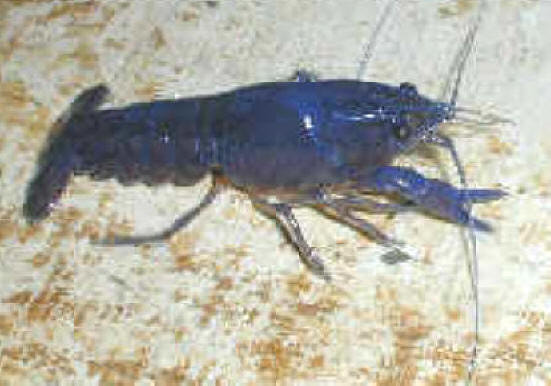 Blue lobster
Questionblue lobster
QUESTION: Hi Richard,
Can a
Blue lobster
Questionblue lobster
QUESTION: Hi Richard,
Can a
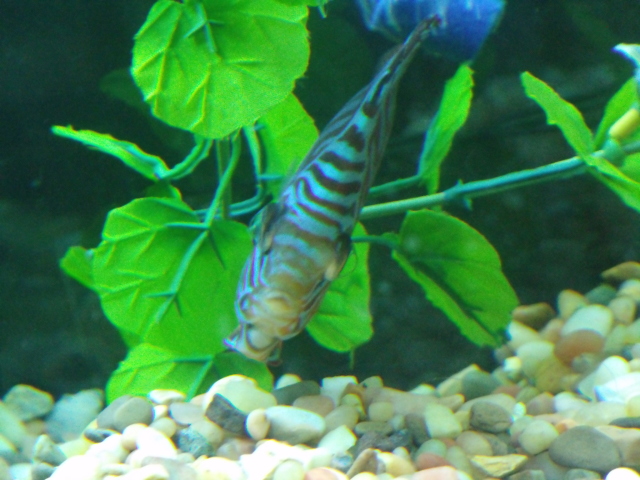 Discus with popeye not eating
Questionpopeye, possible hole
QUESTION: I was d
Discus with popeye not eating
Questionpopeye, possible hole
QUESTION: I was d
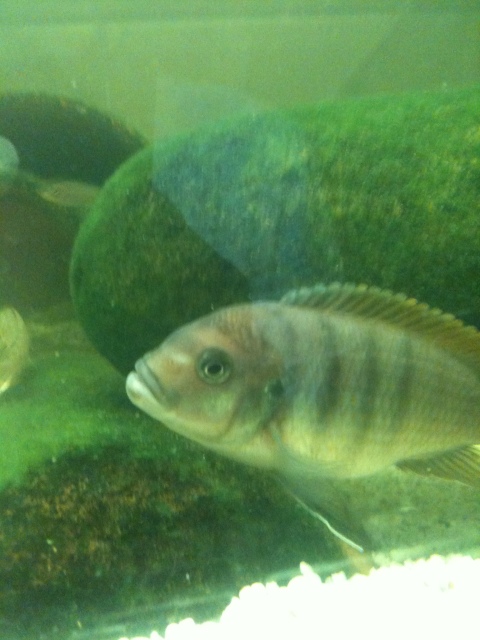 Fish I.D
Questionunknow fish
QUESTION: HI just moved into
Fish I.D
Questionunknow fish
QUESTION: HI just moved into
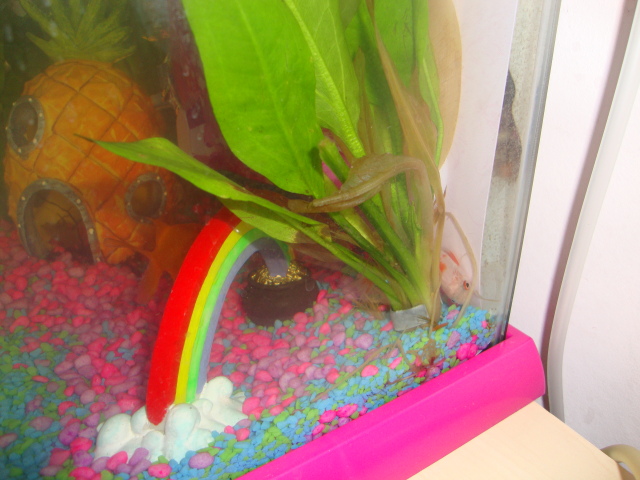 goldfish behaviour
Question
white fish
hi
i have had a small 18l tank now
goldfish behaviour
Question
white fish
hi
i have had a small 18l tank now
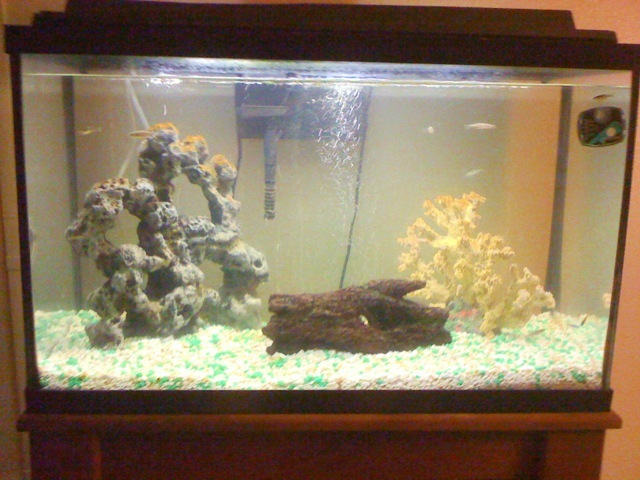 Adding Fish To My Freshwater Tank
Question
My Tank
Hi Jaymie,
My name
Adding Fish To My Freshwater Tank
Question
My Tank
Hi Jaymie,
My name